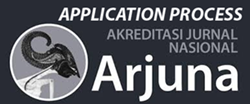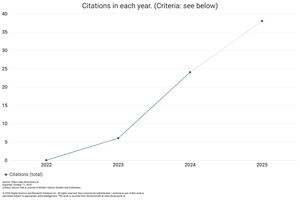Proving Learning Outcomes in Mathematic of Long Addition and Subtraction Materials through the Cooperative Learning Type Jigsaw Model Class IB Islamic Elementary School An-Nuriyah
DOI:
https://doi.org/10.59653/jmisc.v2i01.546Keywords:
Learning Mathematics, long subtraction, Cooperative learning model, Jigsaw, learning improvement, elementary mathematics, Learning OutcomesAbstract
Based on the learning results of first grade students of SDS Ialam An-Nuriyah Jagakarsa South Jakarta, it shows that the results of learning Mathematics about addition and subtraction in long series are still below the specified KKM which is 70. Of the 25 students, only 8 students were able to reach the KKM, while 17 students were declared not to have reached the KKM score. In line with this, an improvement in learning Mathematics about addition and subtraction using the cooperative learning type jigsaw model was carried out. The purpose of this study was to improve the learning outcomes of IB grade students on long addition and subtraction. This research uses a class action research method that uses a cycle system consisting of planning, implementation, observation and reflection. Based on the results of the study, in the pre-cycle students whose learning completeness was above KKM 70 were only 8 students or (36.0%) out of 25 students. In cycle 1 it increased to 14 students or (56.0%) out of 25 students. While in cycle 2 it increased to 24 students or (96.0%) of 25 students. This means that the class learning completeness has been achieved because it has exceeded the target of the predetermined success indicator of 80%. The conclusion is that using the jigsaw type cooperative learning model on long addition and subtraction material can improve student learning outcomes.
Downloads
References
Abdurrahman. M, 2002. Pendidikan Bagi Anak Berkesulitan Belajar. Jakarta: Kencana Prenadamedia. Group.
Adi Suryanto et. all; Evaluasi Pembelajaran di SD, Editor Syamsir, Cet.5, Ed. I, Jakarta, 2010.
Aep Saepuloh et al., “Teacher’s Efforts to Enhance Students’ Competence in Madrasah Ibtidaiyah in Science Skills and Academic Achievement,” Journal of Physics: Conference Series 1764, no. 1 (2021).
Ahmad Susanto. 2013. Teori Belajar dan Pembelajaran di Sekolah Dasar. Jakarta: Kencana Prenadamedia. Group.
Anitah W, Sri, dkk.2014. Strategi Pembelajaran di SD. Banten: Universitas Terbuka.
Atwood, M. (1990). Critical Thinking, Collaboration and Citizenship: Inventing a Framework Appropriate for Our Times. USA: Charles C Thomas, Publisher.
Bell, F. H. (1978). Teaching and Learning Mathematics. USA: Wm. C. Brown Campang Publishers.
Bloom, Benjamin S, etc. 1956. Taxonomy of Educational Objective: The Classificationof Educational Goals, Handbook I Cognitive Domain. New York: Longmans, Green and Co. B
Depdiknas. (2006). Permendiknas Nomor 22 Tahun2006 Tentang Standar Isi Sekolah Menengah Atas. Jakarta: Depdiknas.
Isjoni. 2009. Cooperative Learning (Efektivitas Pembelajaran Kelompok). Bandung: Alfabeta.
Johnson dan Rising dalam Russefendi (1972) Definisi Matematika.
Lie, Anita. 2010. Cooperative Learning. Jakarta: Grasindo.
Mahmudin Sudin et al., “Improve Mathematics Pedagogical Content Knowledge and Verbal Communication Skills through Cooperative Learning Type Jigsaw,” Journal of Physics: Conference Series 1764, no. 1 (2021): 0–6.
Mahmudin Sudin, Cecep Maman Hermawan, Okta Rosfiani, Wahyuliana Ristiawati, and Saifatul Hasanah. “Improve Mathematics Pedagogical Content Knowledge and Verbal Communication Skills through Cooperative Learning Type Jigsaw”. Journal of Physics: Conference Series, https://iopscience.iop.org/article/10.1088/1742-6596/1764/1/012094
Mills, G.E. 2003. Action Research: A Guide for the Teacher Researcher (2nd Ed.). NewJersey: Merrill Prentice Pgl.
Mulyasa.2010. Menjadi Guru Profesional (Menciptakan Pembelajaran Kreatif dan Menyenangkan). Bandung Rosda. Cetakan kesembilan.
NRC, (1989). Everybody Count. A Report to the Nation on the Future of Mathematics Education. Washington DC: National Academy Press.
Okta Rosfiani et al., “Collaboration on Involvement in Improving Science Learning Outcomes through Group Investigation,” Journal of Physics: Conference Series 1764, no. 1 (2021).
Poerwadarminta. 1983. Model Pembelajaran Tematik Kelas Awal Sekolah Dasar. Jakarta: Puskurbalitbang. Depdiknas 2006.
Robert E. Slavin, Cooperative Learning, (Bandung: Nusa Media, 2005), pg. 235.
Sanjaya, Wina. (2008). Perencanaan dan desain sistem pembelajaran. Jakarta: Kencana Prenada Media Group.
Schmuck, R.A (1997). Practical Action Research for Change. Arlington. Skylight Professional Development.
Siti Rohmah, Rusyiah, Cecep Maman Hermawan, Diah Mutiara, Adlan Fauzi Lubis, Siti Shofiyah, Okta Rosfiani. “Knowledge Sharing in Groups to Improve Learning Outcomes and Social Skills of Elementary School Students” Proceedings of the Sixth International Conference on Language, Literature, Culture, and Education (ICOLLITE 2022). https://www.atlantis-press.com/proceedings/icollite-22/125982873
Soedjadi. 2000. Kiat Pendidikan Matematika di Indonesia, (Jakarta: Direktorat Jendral Pendidikan Nasional, 2000), pg 13-15.
Susanto, Ahmad. 2013. Teori Belajar Dan Pembelajaran Di Sekolah Dasar. (Jakarta: Kencana Prenada Media Group).
Wardhani, IGK, 2008, Penelitian Tindakan Kelas. Jakarta: Universitas Terbuka.
Downloads
Published
How to Cite
Issue
Section
License
Copyright (c) 2023 Okta Rosfiani, Maisyaroh Maisyaroh, Anita Dasyani , Syafrina Zahratul Aeni , Zulpa Farida

This work is licensed under a Creative Commons Attribution-ShareAlike 4.0 International License.
Authors who publish with this journal agree to the following terms:
- Authors retain copyright and grant the journal right of first publication with the work simultaneously licensed under a Creative Commons Attribution-ShareAlike that allows others to share the work with an acknowledgement of the work's authorship and initial publication in this journal.
- Authors are able to enter into separate, additional contractual arrangements for the non-exclusive distribution of the journal's published version of the work (e.g., post it to an institutional repository or publish it in a book), with an acknowledgement of its initial publication in this journal.
- Authors are permitted and encouraged to post their work online (e.g., in institutional repositories or on their website) prior to and during the submission process, as it can lead to productive exchanges, as well as earlier and greater citation of published work (See The Effect of Open Access).
























